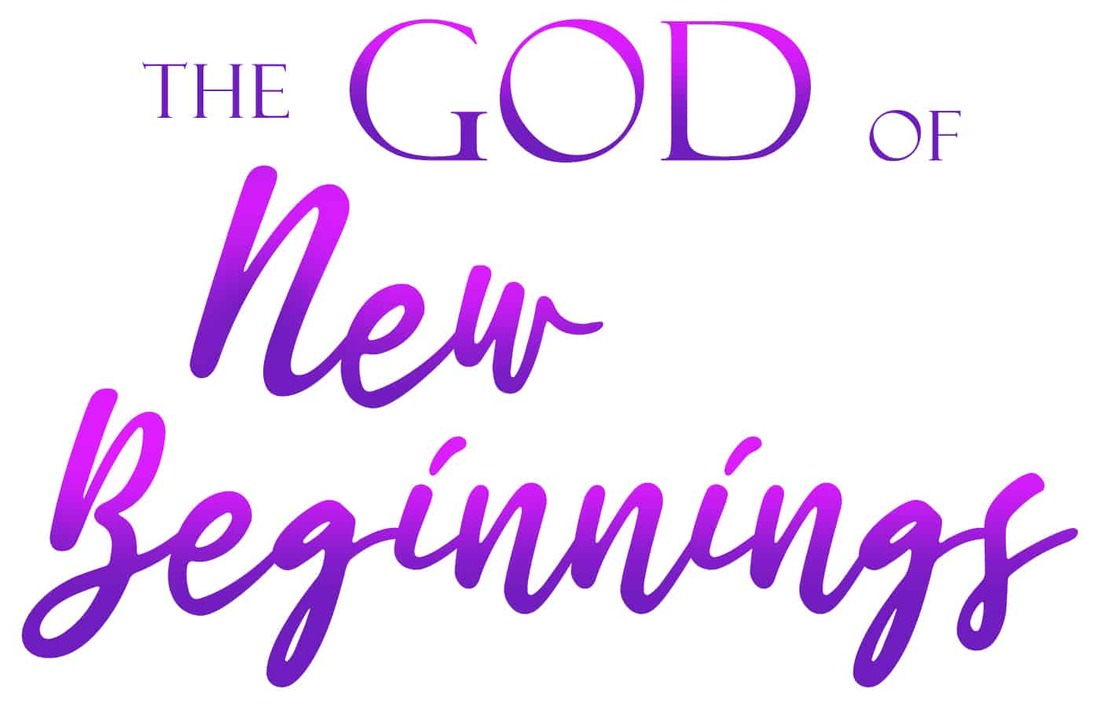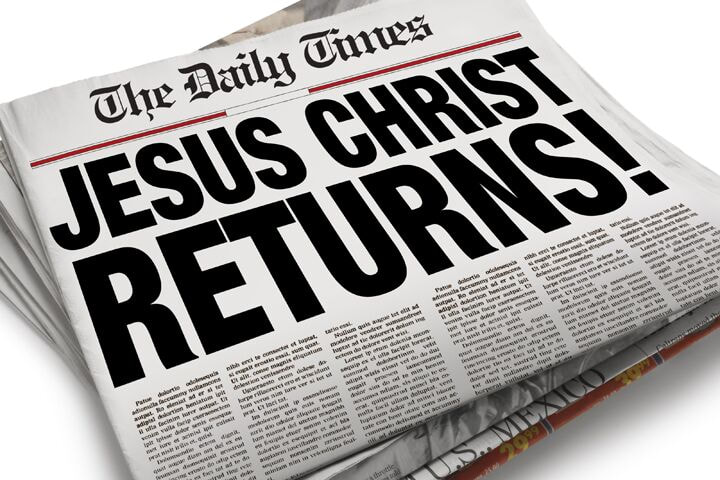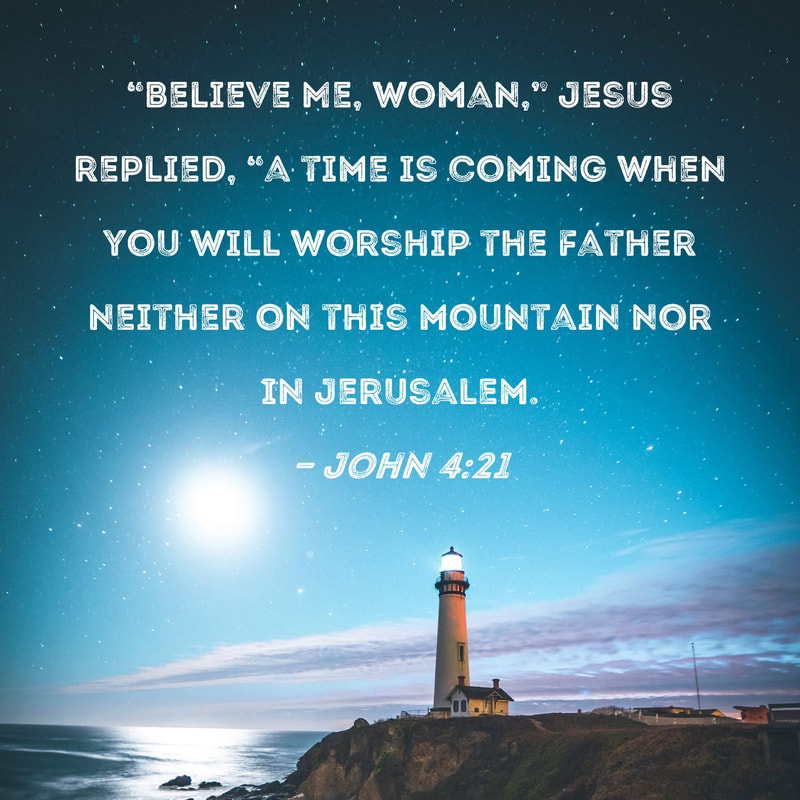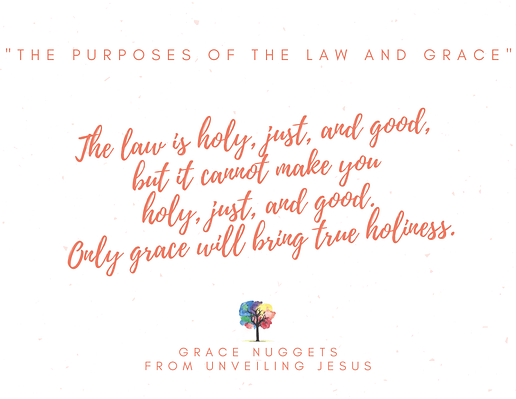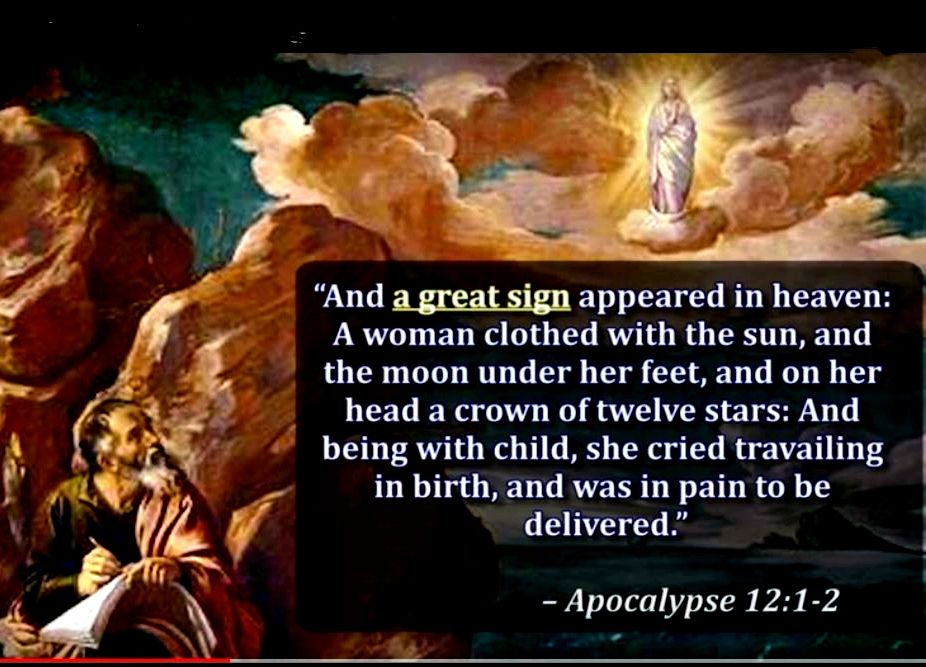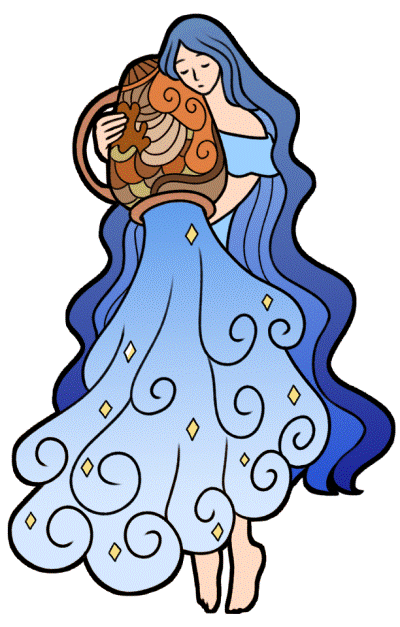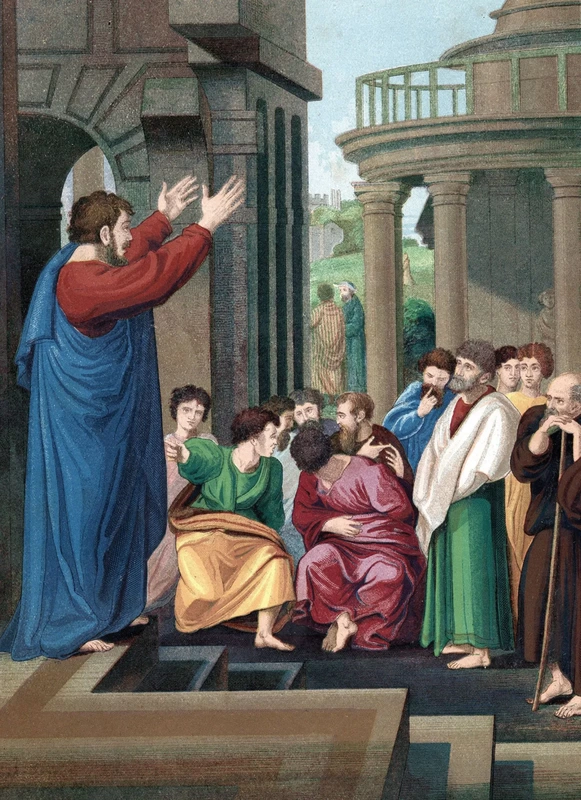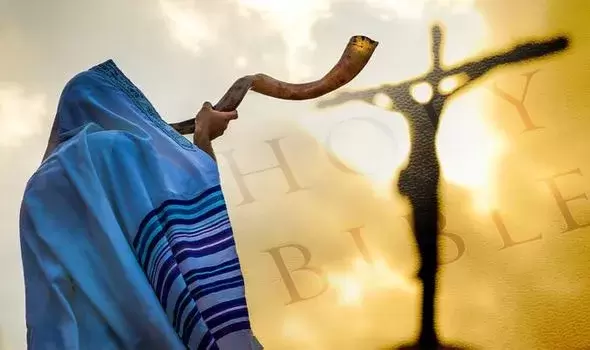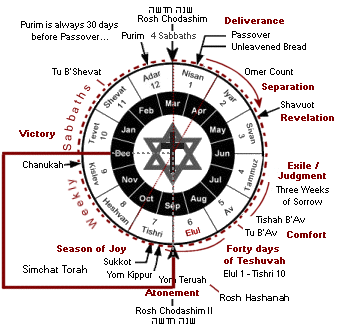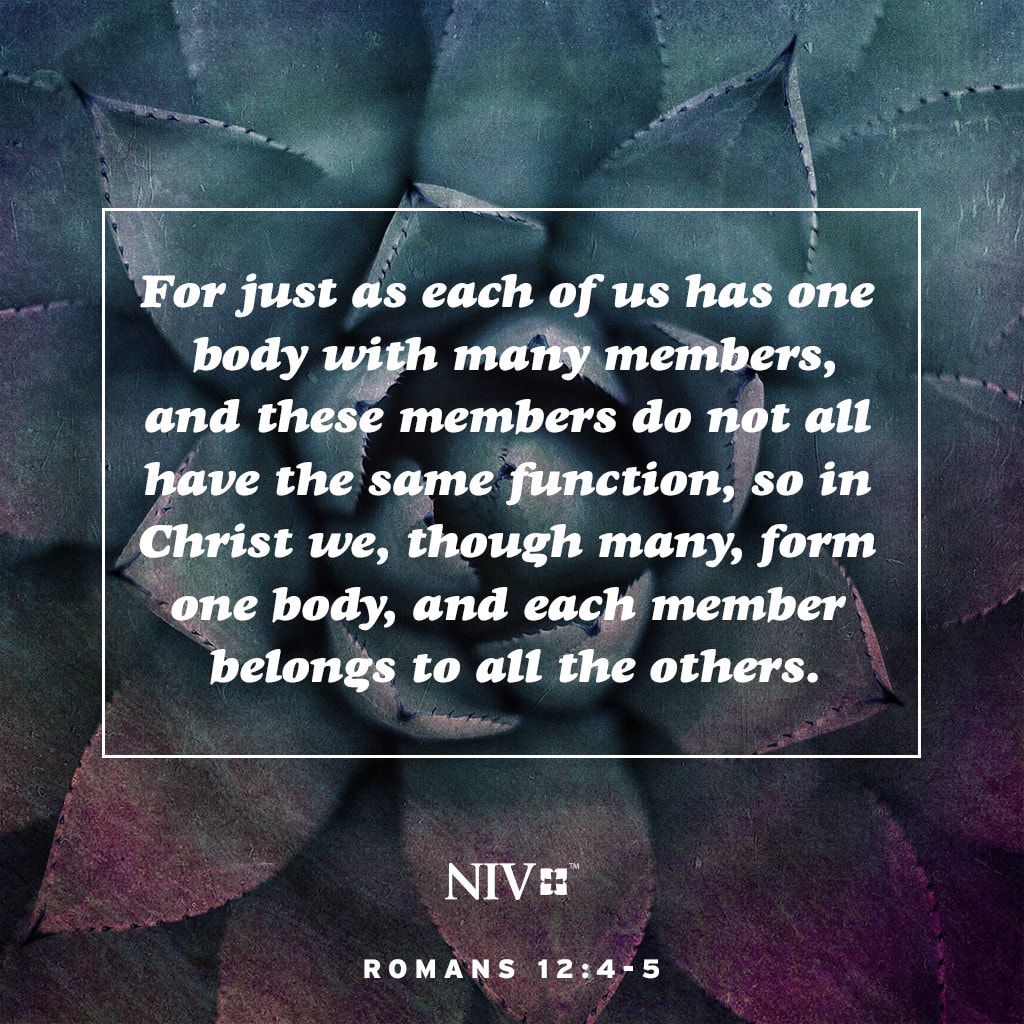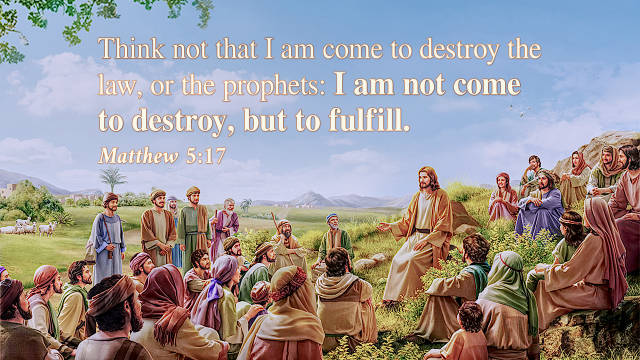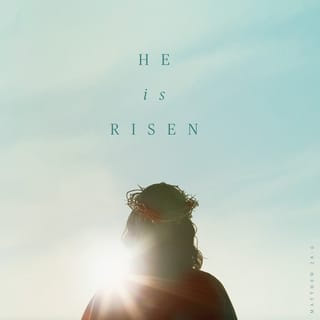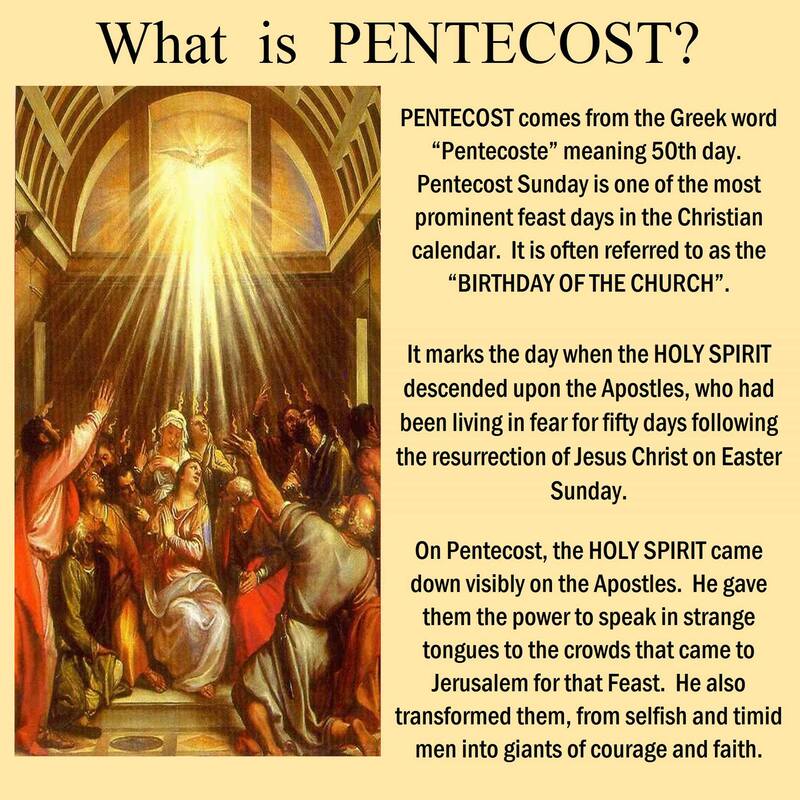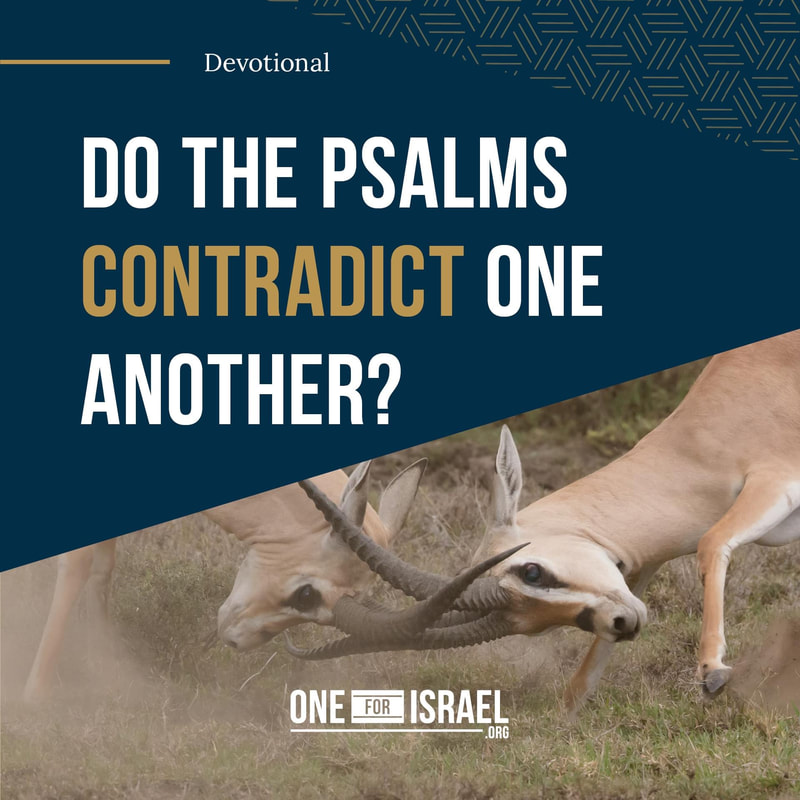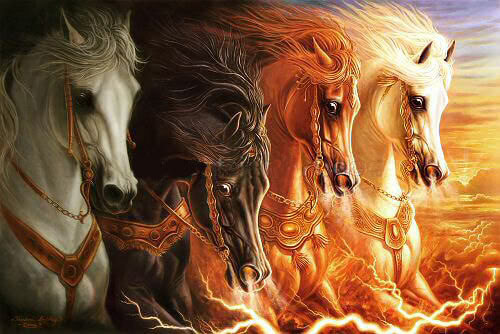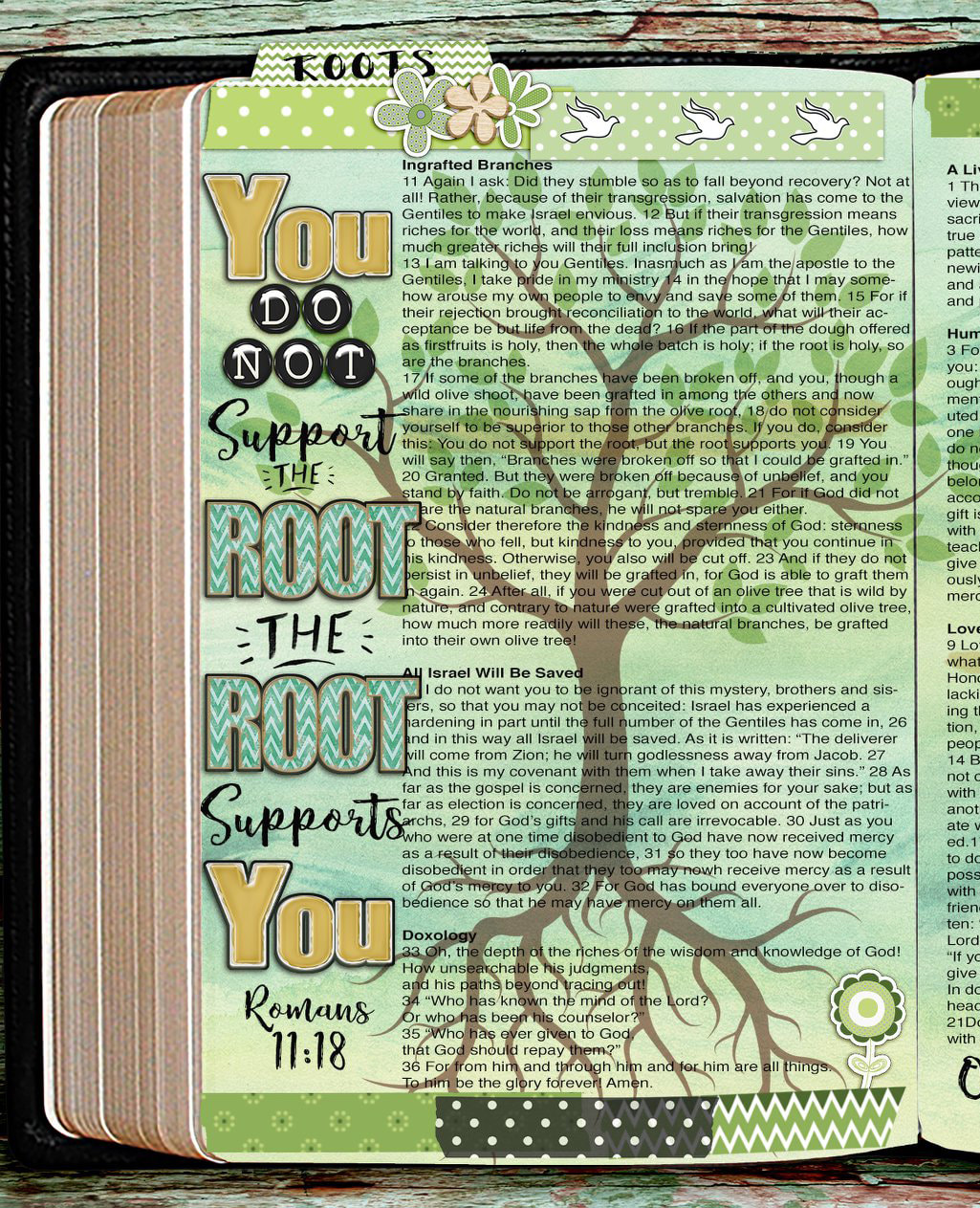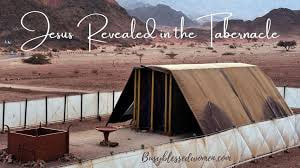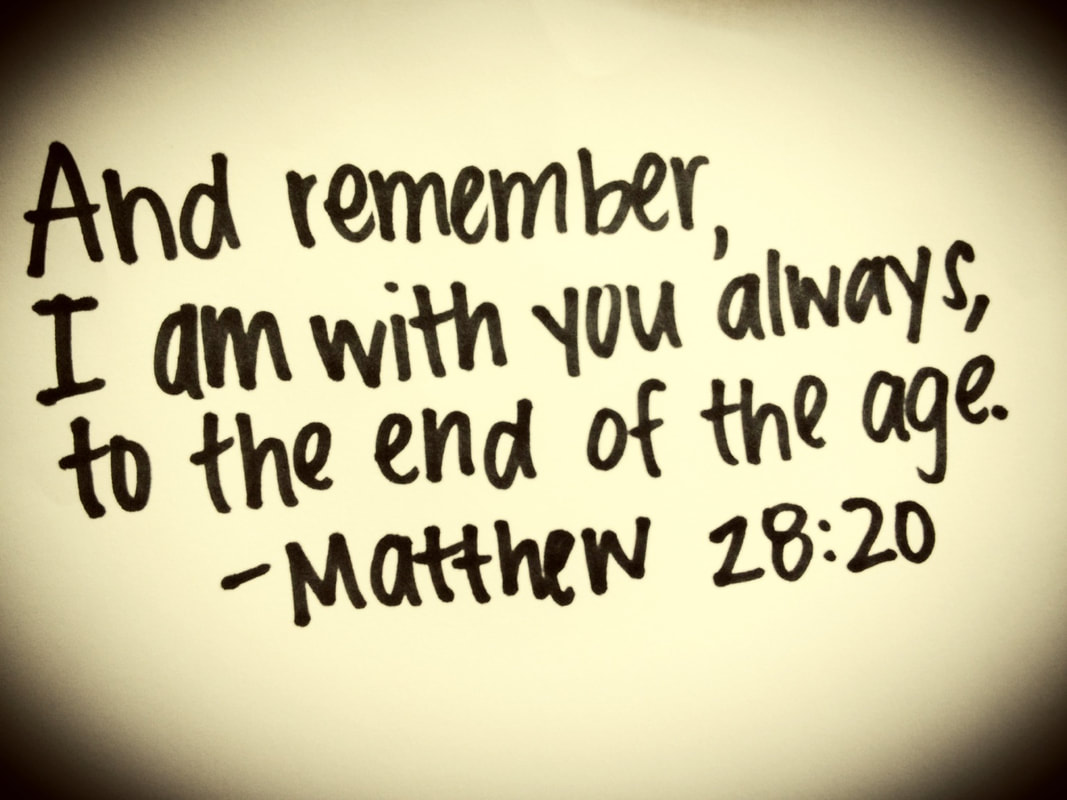The Prophet Daniel and the Fall of Babylon
Babylon is the setting for the ministry of the prophets Ezekiel and Daniel, who were both deportees from Judah. Daniel became a leader and royal adviser to the Babylonian and Persian Empires. He had been captured after the battle of Carchemish in 605 B.C. (Jeremiah 46:2-12). The book of Daniel records Daniel’s interpretation of Nebuchadnezzar’s dream (Daniel 2) and foretells the fall of Babylon to the Medes and the Persians (Daniel 5). Earlier, the prophet Isaiah had also foretold the fall of Babylon (Isaiah 46:1-2).
In the Bible, Babylon is mentioned from Genesis to Revelation, as it rises from its rebellious beginnings to become a symbol of the Antichrist’s evil world system. When God’s people required discipline, God used the Babylonian Empire to accomplish it, but He limited Judah’s captivity to 70 years (Jeremiah 25:11).
Then, God promised to “punish the king of Babylon and his nation” (Jeremiah 25:12) “for all the wrong they have done in Zion” (Jeremiah 51:24). Ultimately, all evil will be judged, as symbolized by Babylon’s demise in Revelation 18:21:
“The great city of Babylon will be thrown down, never to be found again.”
A common tactic of Satan is
to imitate or counterfeit the things of God
in order to
make himself appear to be like God.
What is commonly referred to as the “unholy trinity,” described vividly in Revelation 12 and 13, is no exception. The Holy Trinity consists of God the Father, the Son Jesus Christ, and the Holy Spirit. Their counterparts in the unholy trinity are Satan, the Antichrist, and the False Prophet. While the Holy Trinity is characterized by infinite truth, love, and goodness, the unholy trinity portrays the diametrically opposite traits of deception, hatred, and unadulterated evil.
Revelation 12 and 13 contain prophetic passages that describe some of the main events and the figures involved during the second half of the seven-year Tribulation period. Although many Bible passages allude to Satan in various forms, such as a serpent or an angel of light, he is described in Revelation 12:3 as a “great red dragon, having seven heads and ten horns, and seven crowns upon his heads.” The color red indicates his vicious and homicidal personality. The seven heads symbolize seven evil kingdoms that Satan has empowered and used throughout history to attempt to prevent God’s ultimate plan from coming to fruition. Five of the kingdoms have already come and gone—Egypt, Assyria, Babylon, Medo-Persia, and Greece.
All these kingdoms severely oppressed and persecuted the Hebrews, killing many of them. Satan’s intent was to prevent the birth of Christ (Revelation 12:4). The sixth kingdom, Rome, was still in existence during the writing of this prophecy. Under Roman rule, King Herod murdered Hebrew babies around the time of Christ’s birth and Pontius Pilate ultimately authorized the crucifixion of Jesus. The seventh kingdom, which is more fierce and cruel than the others, will be the final world kingdom that the Antichrist forms during the end times. These kingdoms were also prophesied in Daniel, chapters 2 and 7. The seven crowns represent universal rule, and ten horns represent complete world power or authority.
Revelation 12 indicates many important facts about Satan. Satan and one-third of the angels were cast out of heaven during a rebellion before the world began (Revelation 12:4). The Archangel Michael and the other angels will make war with Satan and his demons, and Satan will be excluded from heaven forever (Revelation 12:7-9). In his attempt to prevent God’s fulfillment of His earthly kingdom, Satan will attempt to annihilate the Jews, but God will supernaturally protect a remnant of the Jews in a location outside of Israel for the last 42 months of the Tribulation (Revelation 12:6, 13–17; Matthew 24:15–21).
The second member of the unholy trinity
is the Beast or Antichrist described in Revelation 13 and Daniel 7.
The beast comes out of the sea, which typically in the Bible refers to the Gentile nations. He also has seven heads and ten horns, indicating his connection to and indwelling by Satan. The ten horns indicate ten seats of world government that will provide power to the Antichrist, three of which will be totally yielded to or taken over by the Antichrist (Daniel 7:8). The number ten also indicates completion or totality, in other words, a one-world government. The one-world government will be blasphemous, denying the true God. The final kingdom will possess traits in common with the former “beast kingdoms” of Babylon, Medo-Persia, Greece, and particularly Rome (Revelation 13:2; Daniel 7:7, 23). Revelation 13:3 seems to indicate that the Antichrist will be mortally wounded about halfway through the Tribulation, but Satan will miraculously heal his wound (Revelation 13:3; 17:8–14). After this wondrous event, the world will be totally enthralled by the Antichrist. They will worship Satan and the Antichrist himself (Revelation 13:4–5). The Antichrist becomes emboldened, and, dispensing with all pretenses of being a peaceful ruler, he openly blasphemes God, breaks his peace treaty with the Jews, attacks believers and the Jews, and desecrates the rebuilt Jewish temple, setting himself up as the one to be worshiped (Revelation 13:4–7; Matthew 24:15.) This particular event has been called the Abomination of Desolation.
The final personage of the unholy trinity is the False Prophet, described in Revelation 13:11–18. This second beast comes out of the earth, not the sea, possibly indicating that he will be an apostate Jew coming from Israel. Although he presents himself as a meek, mild, and benevolent person, the horns indicate that he will have power. Jesus expressly warned believers to watch out for false prophets that may look innocent but actually can be very destructive (Matthew 7:15). The False Prophet speaks like a dragon, meaning that he will speak persuasively and deceptively to turn humans away from God and promote the worship of the Antichrist and Satan (Revelation 13:11–12). The False Prophet is capable of producing great signs and wonders, including bringing down fire from heaven (Revelation 13:13). He sets up an image of the Antichrist for worship, gives life to the image, demands the worship of the image from all people, and executes those who refuse to worship the image (Revelation 13:14–15). Revelation 20:4 indicates that the method of execution will be beheading.
The False Prophet will also compel each person to receive a permanent mark of some kind, just as slaves did in John’s day, to show total devotion to the Antichrist and renunciation of God. Only those who receive the mark will be permitted to engage in commerce. Acceptance of the mark means eternal death (Revelation 14:10). The Bible makes clear that humans will fully understand that, by accepting the mark, they are not only accepting an economic system but also a worship system that rejects Jesus Christ. Revelation 13:18 reveals the number of the Beast—666. No one knows precisely what this means. Some believe that the Antichrist’s first, middle, and last names will have six letters each. Some believe that the designation refers to a computer chip, since some computer programs start with 666.
Satan is the anti-God, the Beast is the anti-Christ, and the False Prophet is the anti-Spirit. This unholy trinity will persecute believers and deceive many others, resulting in their eternal death. But God’s kingdom will prevail. Daniel 7:21–22 states, “I was watching; and the same horn was making war against the saints, and prevailing against them, until the Ancient of Days came, and a judgment was made in favor of the saints of the Most High, and the time came for the saints to possess the kingdom.”
Daniel 2 records an important prophetic vision given to King Nebuchadnezzar and the king’s search for its meaning. The prophet Daniel provides the solution and proves that “there is a God in heaven who reveals mysteries” (Daniel 2:28) and “reveals deep and hidden things” (Daniel 2:22).
Nebuchadnezzar had one particularly troubling dream, causing him to lose sleep (Daniel 2:1). To ensure that he was getting the correct interpretation, he insisted that his counselors tell him the dream itself and not just the interpretation (Daniel 2:2–9). The king’s men recognized that such a request was humanly impossible, asserting that there was no man on earth who could declare the matter to the king (Daniel 2:10). They suggested that only a god could do something so remarkable (Daniel 2:11). When Daniel heard that the king had ordered the death of all his wise men because they couldn’t meet Nebuchadnezzar’s demand, he and his three friends prayed for God to deliver them (Daniel 2:12–18).
While no human could do what Nebuchadnezzar was asking, God would reveal the hidden things. God revealed to Daniel the mystery, and Daniel worshiped God (Daniel 2:23). Before the king’s order to execute his counselors could be carried out, Daniel communicated with Nebuchadnezzar’s executioner and told him that God had provided the answer—God had revealed the hidden things (Daniel 2:24–25). Nebuchadnezzar summoned Daniel, asking whether he could reveal the dream and its interpretation (Daniel 2:26), and Daniel reminded him that no person on earth could do such a thing, but that there is a God in heaven who reveals mysteries, and thatGod reveals the hidden things (Daniel 2:28). Because God revealed the hidden things to Daniel, he was able to tell the king both the dream itself (Daniel 2:31–35) and the interpretation of the dream (Daniel 2:36–45).
Nebuchadnezzar had dreamed of a statue with a head of gold, arms and chest of silver, belly and thighs of bronze, and legs of iron with feet partly of iron and clay (Daniel 2:31–33). A stone uncut by human hands struck the statue at its feet and destroyed it completely, and then that stone filled the whole earth (Daniel 2:34–35). Because God had revealed the hidden things, Daniel was able to explain that the head symbolized Nebuchadnezzar’s kingdom (Daniel 2:38), the chest and arms the kingdom that would follow (Medo-Persia), and after that a third kingdom (Greece), symbolized by the bronze belly and thighs (Daniel 2:39). Daniel further explained that there would be a fourth kingdom, as strong as iron, yet brittle and partially divided (Rome), symbolized by the legs of iron and the feet partly of clay and iron (Daniel 2:40–43). After those kingdoms God would set up His own kingdom, symbolized by the rock that destroyed the statue (Daniel 2:44–45). God’s kingdom would be eternal and fill the whole earth.
God revealed the hidden things to Daniel and saved the lives of Daniel, his three friends, and the other wise men of Babylon. At the same time, God revealed His plan for the ages, beginning with the present world power—Babylon, led by Nebuchadnezzar. God would allow these kingdoms to subsist for a time but one day would intervene directly and rule over the earth Himself. God also revealed to Daniel a short time later that Ruler would be the Son of Man, the Messiah of Israel (Daniel 7:13–14). This One, whom we know as Jesus, will return from heaven one day and gather those on earth who have believed in Him (1 Thessalonians 4:13–17), bring them with Him to remain in heaven until the completion of Daniel’s 70th week (as in Daniel 9:24–27), and then return to earth to fulfill the prophecy of Daniel 2:44–45. Throughout Scripture God has revealed the hidden things—the mysteries, or things not previously revealed.
Daniel was a young man who was taken to Babylon as an exile. He rose to prominence in the administration of King Nebuchadnezzar and his successors (see Daniel 1—6). Babylon was overthrown after only several decades of prominence. The Lord had promised that the Jewish exile was only temporary, and, after the fall of Babylon, the Persian king allowed the exiles to return to Judah to rebuild the city and the temple. These events are recorded in Ezra and Nehemiah.
Because of the awful destruction caused by the Babylonians, Babylon became a symbol for the stereotypical enemies of God and His people.
(Sodom and Egypt are also used in this way.)
Babylon figures prominently in the book of Revelation as the ultimate enemy of God and persecutor of His people.
“Babylon the Great” will be overthrown,
but here is how she is described: “Then the angel carried me away in the Spirit into a wilderness. There I saw a woman sitting on a scarlet beast that was covered with blasphemous names and had seven heads and ten horns. The woman was dressed in purple and scarlet, and was glittering with gold, precious stones and pearls. She held a golden cup in her hand, filled with abominable things and the filth of her adulteries. The name written on her forehead was a mystery:
Babylon the Great, the mother of prostitutes and of the abominations of the earth.
I saw that the woman was drunk with the blood of God’s holy people, the blood of those who bore testimony to Jesus” (Revelation 17:3–6). Revelation also records the downfall of Babylon, lamented by people of the world (chapter 18), along with the rejoicing of the saints at her demise (chapter 19).
For years, many dispensationalists interpreted Babylon as Rome, center of a revived Roman Empire. With the ascendency of Saddam Hussein and war in Iraq, many changed their interpretation, thinking that Babylon might actually refer to a revived Babylonian Empire. For a while, Saddam Hussein attempted to rebuild Babylon, and he even fancied himself as the new Nebuchadnezzar. However, as events unfolded, it became evident that Hussein was not the final enemy of God and that he would not be successful in restoring a Babylonian Empire. It is usually risky to interpret the Bible in light of current events.
In summary,
Babylon destroyed Jerusalem and the temple and became a symbol for the enemy of God and His people.
Revelation uses this imagery, so Babylon in Revelation most likely does not refer to a revived Babylonian Empire but to a national entity that will persecute and destroy in “the spirit of the Babylonians.” The difference is that ancient Babylon destroyed Jerusalem as God’s judgment for her unfaithfulness. In the last days, “Babylon” persecutes believers who are being faithful, and it is Babylon who will be judged.
Babylon is the setting for the ministry of the prophets Ezekiel and Daniel, who were both deportees from Judah. Daniel became a leader and royal adviser to the Babylonian and Persian Empires. He had been captured after the battle of Carchemish in 605 B.C. (Jeremiah 46:2-12). The book of Daniel records Daniel’s interpretation of Nebuchadnezzar’s dream (Daniel 2) and foretells the fall of Babylon to the Medes and the Persians (Daniel 5). Earlier, the prophet Isaiah had also foretold the fall of Babylon (Isaiah 46:1-2).
In the Bible, Babylon is mentioned from Genesis to Revelation, as it rises from its rebellious beginnings to become a symbol of the Antichrist’s evil world system. When God’s people required discipline, God used the Babylonian Empire to accomplish it, but He limited Judah’s captivity to 70 years (Jeremiah 25:11).
Then, God promised to “punish the king of Babylon and his nation” (Jeremiah 25:12) “for all the wrong they have done in Zion” (Jeremiah 51:24). Ultimately, all evil will be judged, as symbolized by Babylon’s demise in Revelation 18:21:
“The great city of Babylon will be thrown down, never to be found again.”
A common tactic of Satan is
to imitate or counterfeit the things of God
in order to
make himself appear to be like God.
What is commonly referred to as the “unholy trinity,” described vividly in Revelation 12 and 13, is no exception. The Holy Trinity consists of God the Father, the Son Jesus Christ, and the Holy Spirit. Their counterparts in the unholy trinity are Satan, the Antichrist, and the False Prophet. While the Holy Trinity is characterized by infinite truth, love, and goodness, the unholy trinity portrays the diametrically opposite traits of deception, hatred, and unadulterated evil.
Revelation 12 and 13 contain prophetic passages that describe some of the main events and the figures involved during the second half of the seven-year Tribulation period. Although many Bible passages allude to Satan in various forms, such as a serpent or an angel of light, he is described in Revelation 12:3 as a “great red dragon, having seven heads and ten horns, and seven crowns upon his heads.” The color red indicates his vicious and homicidal personality. The seven heads symbolize seven evil kingdoms that Satan has empowered and used throughout history to attempt to prevent God’s ultimate plan from coming to fruition. Five of the kingdoms have already come and gone—Egypt, Assyria, Babylon, Medo-Persia, and Greece.
All these kingdoms severely oppressed and persecuted the Hebrews, killing many of them. Satan’s intent was to prevent the birth of Christ (Revelation 12:4). The sixth kingdom, Rome, was still in existence during the writing of this prophecy. Under Roman rule, King Herod murdered Hebrew babies around the time of Christ’s birth and Pontius Pilate ultimately authorized the crucifixion of Jesus. The seventh kingdom, which is more fierce and cruel than the others, will be the final world kingdom that the Antichrist forms during the end times. These kingdoms were also prophesied in Daniel, chapters 2 and 7. The seven crowns represent universal rule, and ten horns represent complete world power or authority.
Revelation 12 indicates many important facts about Satan. Satan and one-third of the angels were cast out of heaven during a rebellion before the world began (Revelation 12:4). The Archangel Michael and the other angels will make war with Satan and his demons, and Satan will be excluded from heaven forever (Revelation 12:7-9). In his attempt to prevent God’s fulfillment of His earthly kingdom, Satan will attempt to annihilate the Jews, but God will supernaturally protect a remnant of the Jews in a location outside of Israel for the last 42 months of the Tribulation (Revelation 12:6, 13–17; Matthew 24:15–21).
The second member of the unholy trinity
is the Beast or Antichrist described in Revelation 13 and Daniel 7.
The beast comes out of the sea, which typically in the Bible refers to the Gentile nations. He also has seven heads and ten horns, indicating his connection to and indwelling by Satan. The ten horns indicate ten seats of world government that will provide power to the Antichrist, three of which will be totally yielded to or taken over by the Antichrist (Daniel 7:8). The number ten also indicates completion or totality, in other words, a one-world government. The one-world government will be blasphemous, denying the true God. The final kingdom will possess traits in common with the former “beast kingdoms” of Babylon, Medo-Persia, Greece, and particularly Rome (Revelation 13:2; Daniel 7:7, 23). Revelation 13:3 seems to indicate that the Antichrist will be mortally wounded about halfway through the Tribulation, but Satan will miraculously heal his wound (Revelation 13:3; 17:8–14). After this wondrous event, the world will be totally enthralled by the Antichrist. They will worship Satan and the Antichrist himself (Revelation 13:4–5). The Antichrist becomes emboldened, and, dispensing with all pretenses of being a peaceful ruler, he openly blasphemes God, breaks his peace treaty with the Jews, attacks believers and the Jews, and desecrates the rebuilt Jewish temple, setting himself up as the one to be worshiped (Revelation 13:4–7; Matthew 24:15.) This particular event has been called the Abomination of Desolation.
The final personage of the unholy trinity is the False Prophet, described in Revelation 13:11–18. This second beast comes out of the earth, not the sea, possibly indicating that he will be an apostate Jew coming from Israel. Although he presents himself as a meek, mild, and benevolent person, the horns indicate that he will have power. Jesus expressly warned believers to watch out for false prophets that may look innocent but actually can be very destructive (Matthew 7:15). The False Prophet speaks like a dragon, meaning that he will speak persuasively and deceptively to turn humans away from God and promote the worship of the Antichrist and Satan (Revelation 13:11–12). The False Prophet is capable of producing great signs and wonders, including bringing down fire from heaven (Revelation 13:13). He sets up an image of the Antichrist for worship, gives life to the image, demands the worship of the image from all people, and executes those who refuse to worship the image (Revelation 13:14–15). Revelation 20:4 indicates that the method of execution will be beheading.
The False Prophet will also compel each person to receive a permanent mark of some kind, just as slaves did in John’s day, to show total devotion to the Antichrist and renunciation of God. Only those who receive the mark will be permitted to engage in commerce. Acceptance of the mark means eternal death (Revelation 14:10). The Bible makes clear that humans will fully understand that, by accepting the mark, they are not only accepting an economic system but also a worship system that rejects Jesus Christ. Revelation 13:18 reveals the number of the Beast—666. No one knows precisely what this means. Some believe that the Antichrist’s first, middle, and last names will have six letters each. Some believe that the designation refers to a computer chip, since some computer programs start with 666.
Satan is the anti-God, the Beast is the anti-Christ, and the False Prophet is the anti-Spirit. This unholy trinity will persecute believers and deceive many others, resulting in their eternal death. But God’s kingdom will prevail. Daniel 7:21–22 states, “I was watching; and the same horn was making war against the saints, and prevailing against them, until the Ancient of Days came, and a judgment was made in favor of the saints of the Most High, and the time came for the saints to possess the kingdom.”
Daniel 2 records an important prophetic vision given to King Nebuchadnezzar and the king’s search for its meaning. The prophet Daniel provides the solution and proves that “there is a God in heaven who reveals mysteries” (Daniel 2:28) and “reveals deep and hidden things” (Daniel 2:22).
Nebuchadnezzar had one particularly troubling dream, causing him to lose sleep (Daniel 2:1). To ensure that he was getting the correct interpretation, he insisted that his counselors tell him the dream itself and not just the interpretation (Daniel 2:2–9). The king’s men recognized that such a request was humanly impossible, asserting that there was no man on earth who could declare the matter to the king (Daniel 2:10). They suggested that only a god could do something so remarkable (Daniel 2:11). When Daniel heard that the king had ordered the death of all his wise men because they couldn’t meet Nebuchadnezzar’s demand, he and his three friends prayed for God to deliver them (Daniel 2:12–18).
While no human could do what Nebuchadnezzar was asking, God would reveal the hidden things. God revealed to Daniel the mystery, and Daniel worshiped God (Daniel 2:23). Before the king’s order to execute his counselors could be carried out, Daniel communicated with Nebuchadnezzar’s executioner and told him that God had provided the answer—God had revealed the hidden things (Daniel 2:24–25). Nebuchadnezzar summoned Daniel, asking whether he could reveal the dream and its interpretation (Daniel 2:26), and Daniel reminded him that no person on earth could do such a thing, but that there is a God in heaven who reveals mysteries, and thatGod reveals the hidden things (Daniel 2:28). Because God revealed the hidden things to Daniel, he was able to tell the king both the dream itself (Daniel 2:31–35) and the interpretation of the dream (Daniel 2:36–45).
Nebuchadnezzar had dreamed of a statue with a head of gold, arms and chest of silver, belly and thighs of bronze, and legs of iron with feet partly of iron and clay (Daniel 2:31–33). A stone uncut by human hands struck the statue at its feet and destroyed it completely, and then that stone filled the whole earth (Daniel 2:34–35). Because God had revealed the hidden things, Daniel was able to explain that the head symbolized Nebuchadnezzar’s kingdom (Daniel 2:38), the chest and arms the kingdom that would follow (Medo-Persia), and after that a third kingdom (Greece), symbolized by the bronze belly and thighs (Daniel 2:39). Daniel further explained that there would be a fourth kingdom, as strong as iron, yet brittle and partially divided (Rome), symbolized by the legs of iron and the feet partly of clay and iron (Daniel 2:40–43). After those kingdoms God would set up His own kingdom, symbolized by the rock that destroyed the statue (Daniel 2:44–45). God’s kingdom would be eternal and fill the whole earth.
God revealed the hidden things to Daniel and saved the lives of Daniel, his three friends, and the other wise men of Babylon. At the same time, God revealed His plan for the ages, beginning with the present world power—Babylon, led by Nebuchadnezzar. God would allow these kingdoms to subsist for a time but one day would intervene directly and rule over the earth Himself. God also revealed to Daniel a short time later that Ruler would be the Son of Man, the Messiah of Israel (Daniel 7:13–14). This One, whom we know as Jesus, will return from heaven one day and gather those on earth who have believed in Him (1 Thessalonians 4:13–17), bring them with Him to remain in heaven until the completion of Daniel’s 70th week (as in Daniel 9:24–27), and then return to earth to fulfill the prophecy of Daniel 2:44–45. Throughout Scripture God has revealed the hidden things—the mysteries, or things not previously revealed.
Daniel was a young man who was taken to Babylon as an exile. He rose to prominence in the administration of King Nebuchadnezzar and his successors (see Daniel 1—6). Babylon was overthrown after only several decades of prominence. The Lord had promised that the Jewish exile was only temporary, and, after the fall of Babylon, the Persian king allowed the exiles to return to Judah to rebuild the city and the temple. These events are recorded in Ezra and Nehemiah.
Because of the awful destruction caused by the Babylonians, Babylon became a symbol for the stereotypical enemies of God and His people.
(Sodom and Egypt are also used in this way.)
Babylon figures prominently in the book of Revelation as the ultimate enemy of God and persecutor of His people.
“Babylon the Great” will be overthrown,
but here is how she is described: “Then the angel carried me away in the Spirit into a wilderness. There I saw a woman sitting on a scarlet beast that was covered with blasphemous names and had seven heads and ten horns. The woman was dressed in purple and scarlet, and was glittering with gold, precious stones and pearls. She held a golden cup in her hand, filled with abominable things and the filth of her adulteries. The name written on her forehead was a mystery:
Babylon the Great, the mother of prostitutes and of the abominations of the earth.
I saw that the woman was drunk with the blood of God’s holy people, the blood of those who bore testimony to Jesus” (Revelation 17:3–6). Revelation also records the downfall of Babylon, lamented by people of the world (chapter 18), along with the rejoicing of the saints at her demise (chapter 19).
For years, many dispensationalists interpreted Babylon as Rome, center of a revived Roman Empire. With the ascendency of Saddam Hussein and war in Iraq, many changed their interpretation, thinking that Babylon might actually refer to a revived Babylonian Empire. For a while, Saddam Hussein attempted to rebuild Babylon, and he even fancied himself as the new Nebuchadnezzar. However, as events unfolded, it became evident that Hussein was not the final enemy of God and that he would not be successful in restoring a Babylonian Empire. It is usually risky to interpret the Bible in light of current events.
In summary,
Babylon destroyed Jerusalem and the temple and became a symbol for the enemy of God and His people.
Revelation uses this imagery, so Babylon in Revelation most likely does not refer to a revived Babylonian Empire but to a national entity that will persecute and destroy in “the spirit of the Babylonians.” The difference is that ancient Babylon destroyed Jerusalem as God’s judgment for her unfaithfulness. In the last days, “Babylon” persecutes believers who are being faithful, and it is Babylon who will be judged.
 RSS Feed
RSS Feed



